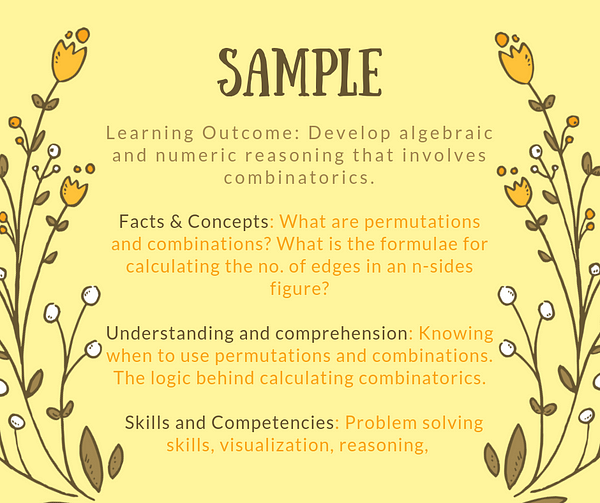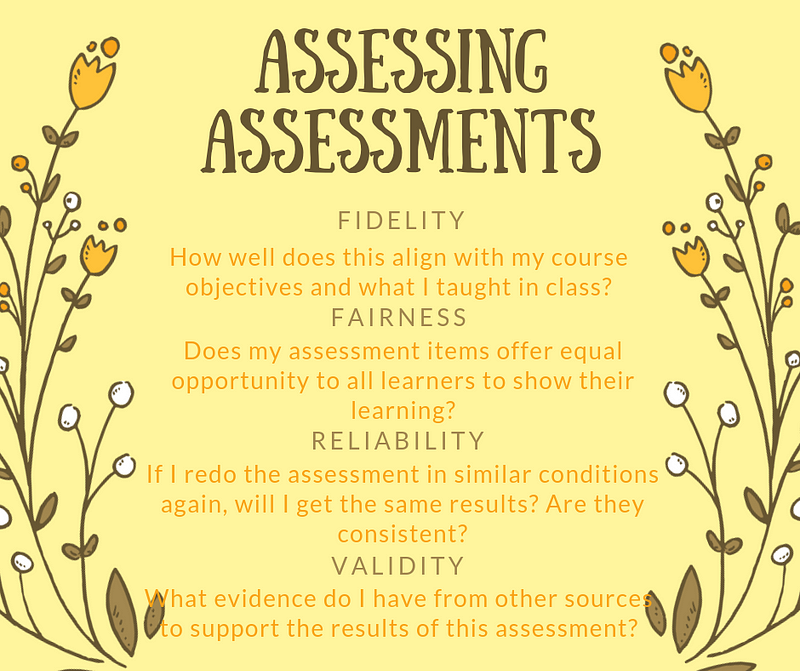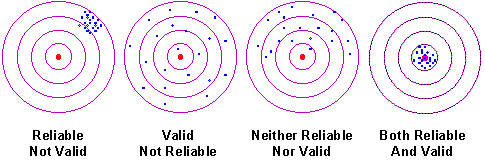When I look back at my schooling, what I remember the most are the exams and tests. I remember during the lectures, teachers did circulate around the classroom and looked at student work but I do not recall their comments. That’s all summative assessment.
I started to get more attention from my instructors in university and the statistics class during my Computing Science undergrad is what comes to mind. We had been given an equation to prove, some relationship about distributions, and I had worked thorough it almost to the end. The instructor was walking in our cramped classroom and he happened to notice my work and said he liked it. That is my first concrete memory of formative assessment.
My first memory of instructional assessment was in Grade 8: my class wasn’t the best one when it came to discipline in the Math block and the teacher decided to ask for feedback. He wanted to work it out with us and he asked the class if anyone could speak for them and present their problems with his instruction to him. I was chosen and I told him that he spoke quietly and the students in the back could not hear. Also, his handwriting was small and was ineligible to the students at the back. I don’t remember any further problems for the rest of the year: after he did this exercise, I think we got along with him better.
A while ago, I would not have been able to tell you the last two were assessments, let alone the type of assessment they were. Almost 2 months away from my student teaching time in school, I am learning about assessment and it has opened up so much in terms of memories and the practices I see my instructors adopting. It’s like I am always questioning what is happening in my other courses based on the assessment course, which is great for keeping the concepts in mind.
As a Teaching Assistant (TA), I took part in grading and gave feedback on assignments. I unknowingly gave formative feedback by answering students’ questions and reviewing concepts I knew they were struggling with. I remember having one-on-one conversations with my students, giving them examples to help relate to the material better. I loved using the Sticky System to know where they were in their learning. I realize now that it was all about building relationships and it was through the means of assessments. Mostly, I followed my intuition and I confirmed with students. I was collecting data and acting on it.
Now, I am learning the nuances of assessments. Yet, the thought that stays at the back of mind, like any educational technique that I learn about, is that how much of it I will remember. How many of these practices will I engage in during my career — that I will internalize them to the point that I won’t need to label them? Or will I forget them altogether in a couple of months, like a lot of content that is covered during class? I hope that this article acts as a refresher for future me and also you. 🙂
What is assessment?
Assessment is a necessary and continuous part of classroom life: it is the collection, evaluation, and use of information to help teachers make decisions regarding students learning and instruction.

Why is it important?
From each component I gain something from it that tells me why assessments plays many roles for the teacher:
- it helps improve student learning. The data that I collect is ultimately to help my students learn. The improvement comes because of my feedback and the changes I make to my instruction based on their feedback.
- it informs and improves instruction and planning. I might know all the best practices but mistakes still happen. I might choose the wrong kind of instrument to use for my assessment and realize that I gained nothing from it. This improves my assessments practices and planning. In terms of instruction, I might have decided on 10 min for an activity but if I see students still need more time, I might give them an extra 5 min and allocate more time for concepts next time.
- it is used to measure and evaluate student achievement. I want my students to be lifelong learners with skills to face the challenges that they face. It isn’t about chasing a grade — it is about the learning — the sense of accomplishment and achievement that one feels when they are trying to attain mastery. I measure student achievement to help them attain mastery, not to get 100/100 — that is just a side effect of mastery.
- it allows us to communicate the results in a meaningful manner. Communication is the key. Assessments give me opportunities to get to know our students better and express to them where I think they can go from where they are.
In Alberta, the Fraser report ranks all schools based on the performance of the students on standardized tests. Thus, assessments also give us a glimpse into how the school programming is functioning.
When do I assess?
Me (couple years ago): End of the unit!
Me (now): Wherever possible such that it contributes to student learning!
As students, we do not realize that a good amount of classroom time is spent in assessments. Every interaction with the teacher, whether it is verbal by asking a question, or non-verbal in the form of a raised eyebrow or a confused expression, contributes to assessment.
Assessment is not only an ad-on activity that occurs after instruction is completed. Rather, assessment is integrally related to all aspects of teacher decision making and instruction. — McMillian (2011, pg. 8)
Assessment before instruction (Pre-instruction)
These assessments are done before instruction to give the teacher an idea about who the students are and what they know. Diagnostic assessments might be used to identify students with learning difficulties and to build support in the lesson for the needs of all students. Some sources are data collected by teachers in previous years about the student, standardized tests, and first impressions.
Assessment during instruction (Ongoing) — assessment of learning
Also known as formative assessment, the aim of this kind of assessment is to inform instruction and give immediate feedback to the students to enhance understanding and motivation.
Assessment after instruction (Post-instruction) — assessment for learning
This is commonly referred to as summative assessments which is undertaken at the end of a unit. It certifies students learning and assigns a grade to what the student knows.
What do I assess?
Me (couple years ago): content knowledge.
Me (now): There’re facts and concepts from the content, then understanding and comprehension of the content, and skills and competencies that I want my students to develop.
That’s part of a textbook answer but let’s take a look at why (and to what degree) we have these four categories of what we want to assess.
A Learning Outcome is a broad statement about the student performance that should be demonstrated at the end of an instructional unit. It is found in the curriculum. An Instructional Outcome, on the other hand, is created by the teacher and indicates what the students actually do to demonstrate their learning. It is from the learning outcome and the instructional outcome that we can understand what we should be assessing. Consider the following learning outcome from Math 30–1, Alberta.

The big concepts are stated in the learning outcome. The facts can be derived form those, based on the content knowledge. Understanding and comprehension is achieved by developing instructional outcomes that state how the students will engage with the material and the kind of problems they will solve. All these led to the acquiring and use of skills and competencies (also stated in the curriculum in this case). Ultimately, the goal of any learning outcome to to teach skills and competencies through the medium of content — something the students can relate to to earn those skills.
How can I judge how I am really doing at assessing?
Tough question! To assess my own assessments, I have to be aware of four main concepts.

Fidelity
Fidelity is alignment — what was taught and what was assessed. These two must align together for assessments to be high quality and reflective of student learning and performance.
Fairness
We want to be able to provide students equal opportunity to demonstrate their learning. This is possible by ensuring the following:
- It should be clear what will and will not be tested. Students should be aware of the content and scoring criteria.
- By giving ample time to students to learn a concept as well as resources and environments in which they can demonstrate their learning is a way to ensure fairness.
- As teachers, we should have a clear understanding of the pre-requisite skills and testing abilities of the students.
- Students are always judged on their performance, not by any labels that they might have been given, their background or stereotypes.
- Tasks and procedures should not have biases and at the same time, should not offend students or give one group an unfair advantage over another. For example, when I first moved to Canada, a word that I heard often was ‘patio’. However, I had no context of the word. Thus, as a teacher, I have to aware of assumptions I might be making about the knowledge and interactions my students have had.
- Tasks should be modified for exceptional students — the task itself should never be a limiting factor for performance.
Reliability
The repeatability or consistency of an assessment is its’ reliability — if I give this same test to the same students under the same conditions, if their results are the same then the test would be a reliable one.
Validity
In philosophy, an argument is said to be valid when the premises as well as the conclusion drawn from the premises are true. In education, the premises are the learning evidences and the conclusion is the inference we want to draw from the score. Thus, the validity of test scores depend on the learning evidence that the teacher has been collecting. This evidence should be collected in multiple ways by the teach, such as observations, homework, discussions, etc., to support the inferences from the assessment.
The Relationship between Reliability & Validity
The relationship between reliability and validity can be summarized as follows:

The figure above shows four possible situations. In the first one, you are hitting the target consistently, but you are missing the center of the target. That is, you are consistently and systematically measuring the wrong value for all respondents. This measure is reliable, but not valid (that is, it’s consistent but wrong).
The second, shows hits that are randomly spread across the target. You seldom hit the center of the target but, on average, you are getting the right answer for the group (but not very well for individuals). In this case, you get a valid group estimate, but you are inconsistent. Here, you can clearly see that reliability is directly related to the variability of your measure.
The third scenario shows a case where your hits are spread across the target and you are consistently missing the center. Your measure in this case is neither reliable nor valid.
Finally, we see the “Robin Hood” scenario — you consistently hit the center of the target. Your measure is both reliable and valid (I bet you never thought of Robin Hood in those terms before). — Trochim (2006)
As teachers, we wear many hats. We are designers of our classrooms and instructions. We are facilitators of learning for our students. We are their guides. We are an integral part of the school community. We are the supporters of our school students. I have used assessments without realizing what I was doing. I have also completed assessments, where as a student, I did not gain anything at all. Each of us starts here — we all learn about assessment and its related concepts and then we go into our classrooms and much of this becomes part of everyday life. It’s another hat we wear over the course of the day.
Imagine your student teaching year or your first year as a teacher. If you could tell yourself one thing regarding assessments now, something you know now but did not then, an advice, an anecdote, a philosophy to live by, what would it be?
For me, I would have liked my TA self from 4 years ago to be more aware. I loved building relationships with my students and getting to know them.
I wish I had spent some more time in learning about assessments and being intentional — really thinking about what I was doing.
What is the purpose of this? What are some purposes I have overlooked? As I head into my student teaching, I will keep that in mind. I get to start fresh. 🙂
Coming up
- Continuing further with the concept of fairness, I will be writing about Culturally Responsive Teaching next!
- I love differentiation in instruction and I will be picking up Rick Wormeli’s Fair isn’t always equal to learn more about assessing differentiated instruction.
References and Further Reading
McMillan, J. H. (2011). Classroom assessment: principles and practice for effective standards-based instruction 5th ed. Boston: Ally & Bacon.
Trochim, W. M.K. (2006). Reliability & Validity. Retrieved from Social Research Methods.
Wormeli, R. (2018). Fair isn’t always equal: Assessing & grading in the differentiated classroom. Stenhouse Publishers.

Be First to Comment